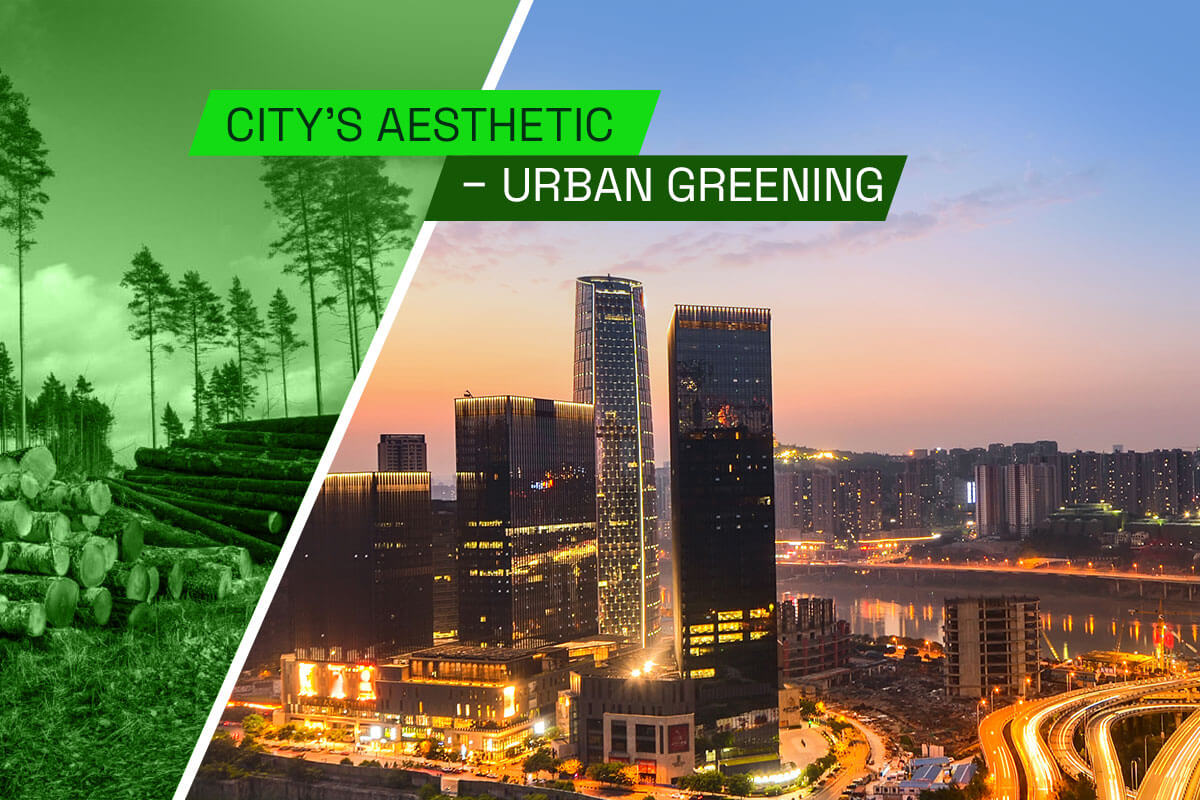City’s Aesthetic – Urban Greening

The rapid growth of cities and the movement of humanity further in the direction of urbanisation have led to increased deforestation. This has inevitably caused rise in air pollution therefore degrading the quality of air that the citizens of those metropolitan cities breathe, it has also led to temperature surges contributing to the growing global warming and climate crisis and nudged growth in illnesses related to the pulmonary and cardiovascular. Despite having planned smart cities and metropolitan areas across the globe, there has been massive deforestation and little to no visible efforts towards reforestation in these concrete jungles with a sprawling population.
Reforestation is usually of two types: urban reforestation and rural reforestation. Urban reforestation is also known as “urban greening.” Urban reforestation essentially involves the planting of trees or the regeneration of them in urban areas in a systematic manner to ensure the reversal of deforestation and the ill effects of it that hamper urban societies on a regular basis.
Urban greening, however, involves way more creative and unique methods to increase the green space in cities filled to the brim with sky-touching towers congested close to each other and housing lakhs and lakhs of people who further contribute to deforestation. While certain initiatives for urban greening involves announcing the existing forest cover protected areas, making it a punishable offence to encroach these protected areas for residential or commercial purposes and attempts at systematic reforestation. While these have played their role to a certain extent, the ability to integrate reforestation into the city landscape has been in the form of living walls and green roofs. They are becoming increasingly popular and are being incorporated into the architectural design of businesses and residential areas.
While the conventional benefits of urban greening are reduced air pollution, fewer floods due to the soaking of water, and lowered temperatures, What many people fail to recognise is that urban greening would also help with improving the mental health of the citizens, working as an aesthetic that is visually pleasing, creating habitats for wildlife, calming the people, and reducing urban crime.
Urban reforestation is an issue to be looked into by city planners and architects alike. They have to come up with out-of-the-box ways to bring about the involvement of efforts towards urban greening while curating spaces in a city or a building. However, there is a lot more onus on public bodies to bring about awareness regarding urban greening and educate people in the ways they can contribute to it. Additionally, it is important for governmental bodies to ensure strict implementation of forest conservation laws.
There are few cities across the globe that are taking considerable measures for urban greening and getting acknowledged for their environment-friendly steps for all the right reasons. Liverpool, England, turned the 65-meter barren wall of St. John’s Shopping Center into a leaf habitat with 14,000 evergreen trees, making it a living wall. It has been strategically placed close to a bus station to cut down on the air pollution emitted by it.
Curitiba, in Brazil, has seen a conscious effort towards city planning that makes the citizens’ health their primary concern since the 1970s. In this latest phase of city planning, there have been active attempts at urban greening by creating leisure spots and incentivizing recycling.
Singapore has set out to become a “city in nature.” In 2021, Singapore announced an ambitious programme for its city-state called “Green Plan 2030,” which envisions making the city as sustainable and nature-inclusive as possible.
With the Mavisehir Peynircioglu Stream Ecological Corridor, Izmir, a city in Turkey, is hoping to reduce air pollution. This green ribbon of carbon-consuming vegetation was opened in October 2020.
In an attempt to reduce the city’s temperatures, Seoul, South Korea, has planted a forest.
In New York City, the Highline Park is a two-kilometer-long, wheelchair-accessible recreational park that has been created at an elevated height over a disused railway line. When the railway line closed, people of the city came together to ensure that the place is put to good use.
A closer-to-home example of not urban greening but protecting the urban green space could be the Save Aarey protests that sparked in the city of Mumbai to condemn the order to cut down trees in the Aarey Forest, which is highly regarded as the lungs of the city for metro car sheds. Without dwelling into the socio-political concerns of the issues, it was evident that there has been an increase in awareness towards the need of urban greening.
Therefore, unique urban greening programmes are an effective way to ensure urban reforestation is aptly integrated into the cityscape.
